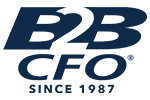|
Every business needs cash in order to be successful. When times are good, cash (along with many other important metrics) can be forgotten and overlooked. When times are bad, the individual entrepreneur, small business as well as Fortune 100 Companies (yes, even the auto industry) are in critical need of it. The first thought of small and emerging businesses is to rush to their bank and utilize existing lines of credit or request increases. Unfortunately, this is usually the worst time to approach your banker. Many business owners overlook a valuable asset that can generate some very positive cash flow when managed properly. That asset is their ACCOUNTS RECEIVABLE! The management of Accounts Receivable is often neglected until the business is in desperate times.
A good A/R program must be instituted when the business first begins to generate Receivables. The components that need to be developed and maintained are:
- Establish written credit policies and procedures that not only establish your expected days for collection, but detail what actions need to be taken when a customer falls outside these parameters (i.e. Customer goes over credit limit, Customer exceeds payment terms, Customer bounces a check, significant change in Customer’s credit report, etc.).
- Identify someone in the organization (i.e. Credit Manager) who will be responsible and have accountability for making credit and collection decisions and take subsequent actions for proper and timely notifications to delinquent customers. This person should NOT be someone in the company who also has Sales responsibilities. This would be a conflict of interest.
- Be sure there is adequate computer software to accurately track the Receivables and print meaningful Aging reports. These reports must be run regularly (typically monthly or even weekly depending on the business cycle). The Credit Manager should note, on the reports, all actions taken for past due accounts. It is also advisable for the Owner or applicable Executive to have regular meetings with the Credit Manager and review the status of open accounts.
- Have all customers, prior to being sold/serviced, complete a Credit Application that will be reviewed and approved by the person who has accountability for Receivables. This document could become invaluable if legal proceedings need to be taken and provides accuracy in initially establishing the customer’s name, address, etc. The document should also require a personal guarantee from the Customer’s owner. This form should be reviewed by an attorney prior to putting it in use.
- Subscribe to a credit reporting service (such as Dunn & Bradstreet) so you can obtain pertinent information about your customers prior to shipping/servicing. A copy of the report should be filed along with the Credit Application. Periodic updates to these reports should also be run and reviewed by the Credit Manager. The frequency of these reviews should be included in the Policy/Procedure Manual described above.
- All accounting personnel responsible for billing, must understand that every invoice needs to be generated and mailed in a timely fashion with the invoice date being the date product was sold or services delivered. It is also a good idea for the expected due date to be printed on the invoice so there are no misunderstandings by the Customer. A delay in the billing function gives the Customer an excuse to pay late. It will also produce an inaccurate Aging report, thereby providing erroneous information to the Credit Manger and in many cases, the bank.
- Print and mail a Statement to each Customer periodically. This will allow the Customer to see how much is owed and how many days outstanding the account is. It will also help to protect the integrity of your Receivables in that the Customer will contact you if they feel the balances are incorrect. This is an important function in developing internal controls for your business.
- Develop a relationship with a reputable collection agency in your area. Don’t be afraid to use their services once your internal collection methods have been exhausted. The longer you wait to act, the more difficult it becomes to collect. They will typically charge 15% – 30% of their collections, so be sure you have done everything you can before seeking their assistance.
- Carefully monitor Customers who consistently take unauthorized deductions. This is an indicator that you have a problem with this account or your billing is not being done correctly. Either way, a red flag needs to be waved.
The collection of your Accounts Receivable should never be ignored or lessened on your priority list. Your customers will eventually respect your tenacity in collecting and will respect you for it. Many times, Customers will delay payments to other Vendors or Suppliers, if they are low on cash, to avert receiving a collection call from you. A well-run Company knows the importance of their Accounts Receivable in good times and bad.
As a B2B CFO® partner, I understand the importance of developing sound policies and procedures for Accounts Receivable, and recognize the problems that can occur when they’re not being watched. In many companies, the Accounts Receivable is the single most significant asset, and attention to detail may mean the difference between the success and failure of any business.
If you believe that your Company would benefit from further discussions regarding your Accounts Receivable policies and procedures, please contact me to set up a meeting. I am proud to serve the Modesto, Stockton, Fresno and greater central valley region as a Partner in B2B CFO® |


